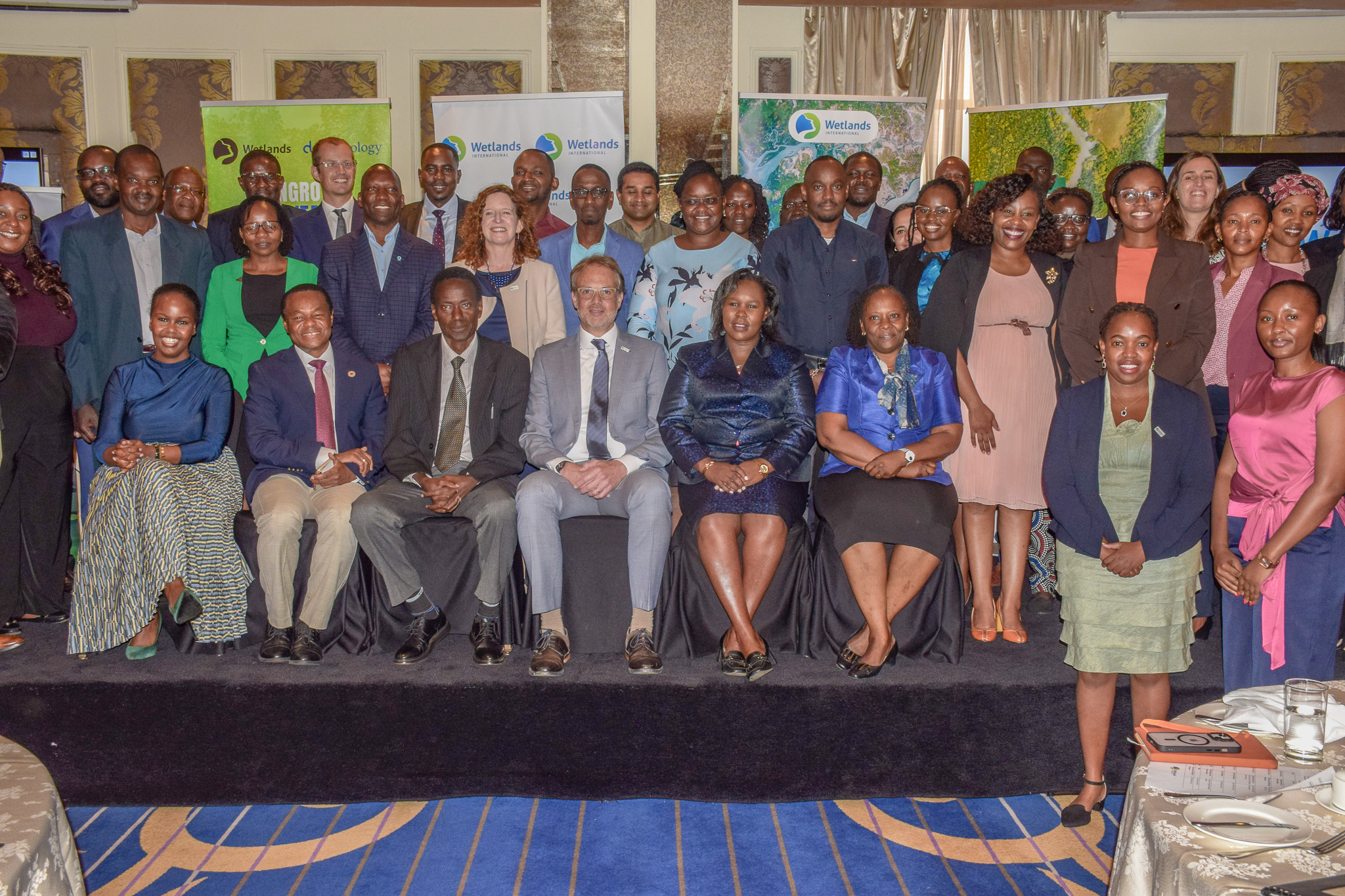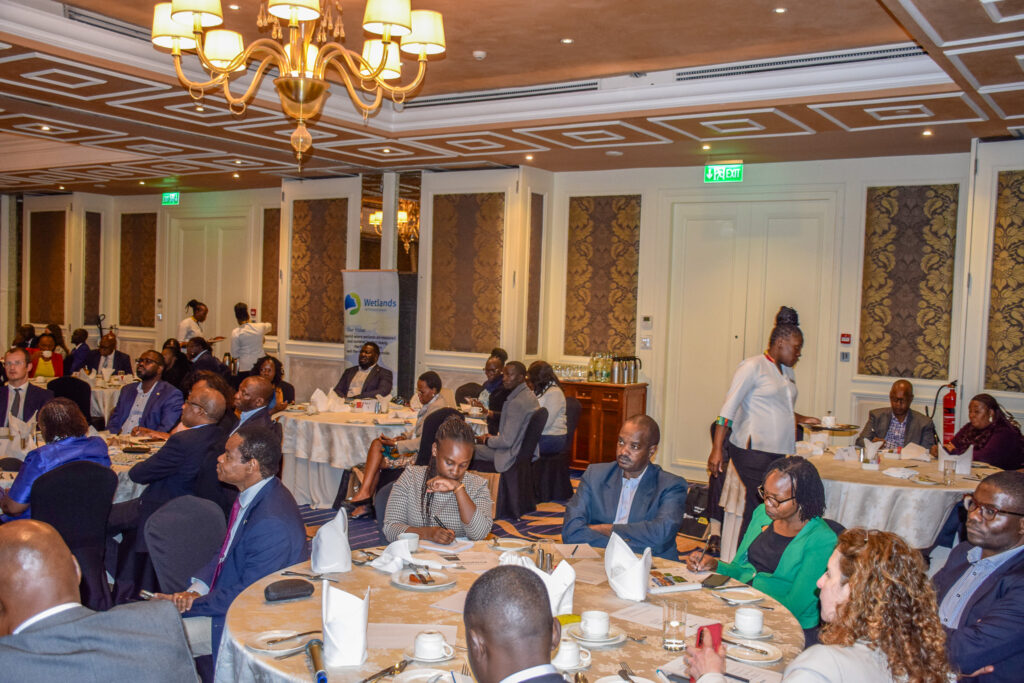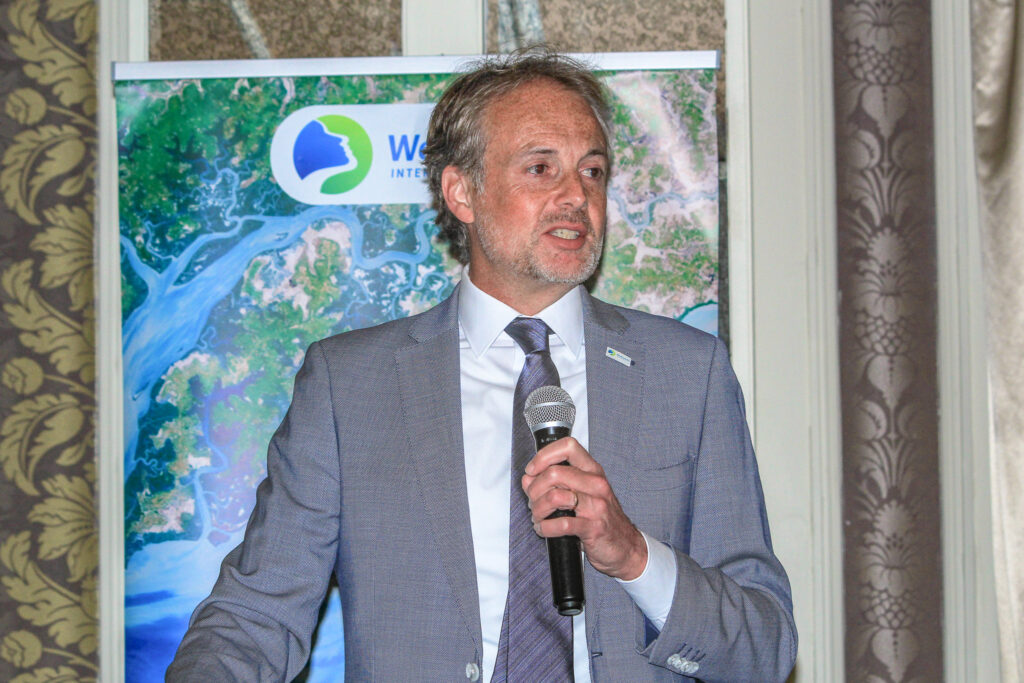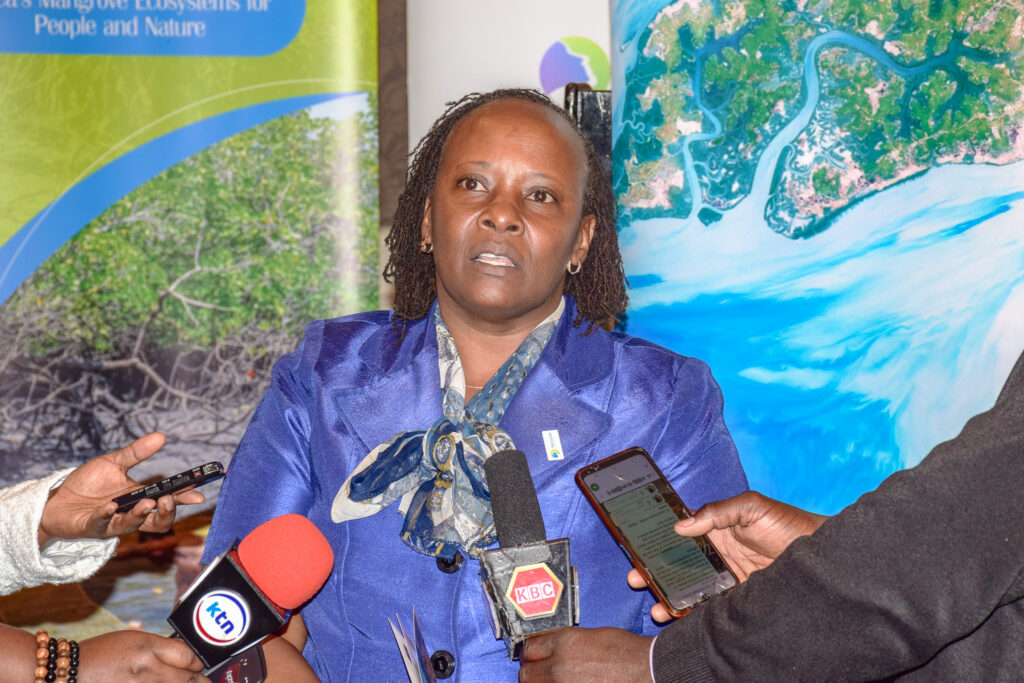
From Pledges to Partnerships: What Eastern Africa Needs Now
“We can’t restore what we still destroy. And we can’t build climate resilience without restoring nature first.”
That wasn’t just a quote tossed into the room it was the tone that anchored the CEO’s Breakfast Roundtable held on June 12, 2025, in Nairobi.
Hosted by Wetlands International Eastern Africa, this gathering wasn’t about big talk but it was about big shifts. A space where leaders across government, civil society, and the private sector confronted a shared truth:
Eastern Africa’s water ecosystems the very systems that sustain life, livelihoods, and economies are collapsing.

The Crisis Beneath Our Feet
Across Eastern Africa, wetlands and river basins lifelines for millions are being pushed to breaking point. The evidence is no longer confined to technical reports; it’s visible in dried-up riverbeds, abandoned farms, collapsing fisheries, and the migration of entire communities in search of water and food.
In our landscapes of intervention, Wetlands International Eastern Africa has identified urgent and interconnected threats:
1. Tana River Basin – From source to sea under siege
Once a reliable artery delivering freshwater from central Kenya to the coast, the Tana River is shrinking under pressure. Upstream, deforestation in the Aberdares and Mount Kenya catchments reduces water retention, while over-abstraction for irrigation leaves downstream stretches parched. Sand harvesting and unregulated development worsen bank erosion. At the delta, mangroves vital for coastal protection and fisheries face degradation from overharvesting, salt production, and conversion to settlements. Global Mangrove Watch data confirms significant canopy loss in several zones of the delta over the last decade.
2. Rufiji Delta – Mangrove powerhouse under threat
The Rufiji Delta in Tanzania is one of the largest continuous mangrove areas in Africa, storing vast amounts of “blue carbon” and sustaining fisheries that feed thousands. Yet, GMW analysis highlights areas of canopy thinning and loss, driven largely by illegal cutting for rice farming and timber. These changes compromise flood regulation, increase salinity intrusion, and threaten local food security.
3. Climate extremes and human pressure – A dangerous feedback loop
In all these landscapes, we see a pattern: degraded wetlands are less able to regulate water flow, making droughts drier and floods deadlier. In the Tana Delta, for example, prolonged dry seasons force herders into already stressed farmland, sparking conflict. When rains finally come, the lack of vegetation cover means floodwaters sweep through villages and fields with destructive force.
The Global Mangrove Watch platform makes this crisis visible from space. Its open-access satellite data, combined with our community-based monitoring, shows exactly where mangrove cover is declining and where restoration efforts are holding the line. These are not abstract data points they represent lost protection from storms, lost breeding grounds for fish, and lost income for households.
This is not a looming crisis. It’s here. It’s eroding livelihoods, biodiversity, and resilience right now. And it demands what we’ve talked about for far too long but acted on too little: strategic partnerships that deliver real, coordinated action at scale.
Not Just Promises But Real Partnerships
This Roundtable felt different. Less posturing, more honesty. Less theory, more urgency.
At its core was one theme:
“Catalyzing Strategic Partnerships through Advancing Sustainable Water Ecosystem Restoration, Biodiversity Conservation, and Sustainable Livelihoods in Eastern Africa.”
A complex phrase but a simple truth: fixing the environment is fixing the economy.

What does that look like in practice? It means aligning private sector investments with ecological restoration. Empowering county governments to lead with community priorities. Collaborating across borders to manage shared river systems. And unlocking financing that shifts us from pilot projects to large-scale solutions.
It’s about moving from transactional engagements to transformative alliances.
Wetlands: The Missing Piece
Among the ecosystems discussed, wetlands took centre stage and for good reason. Often described as “the Earth’s kidneys,” wetlands filter and store water, protect against floods and droughts, and hold more carbon than all the world’s forests combined. Yet, they remain misunderstood, undervalued, and under threat.
As Dr. Coenraad Krijger, CEO of Wetlands International, emphasized:

“Wetlands are climate superheroes… the largest storage of carbon on land. Over 30 per cent of global terrestrial carbon is stored in wetlands even more than forests. Yet they are consistently overlooked in international policy debates.”
His remarks came not only at the Roundtable, but also during a broader tour of Kenya’s key wetlands, where government officials, NGOs, and corporate leaders gathered to underscore just how vital these ecosystems are for climate resilience, food systems, and economic stability.
Dr. Julie Mulonga, Regional Director for Eastern Africa at Wetlands International, echoed this urgency:

“Wetlands are our best natural defense against climate extremes. They store water during floods, release it during droughts, purify it, and support millions with food and income. But when they’re gone, that safety net disappears too.”
Many wetlands, especially smaller ones, don’t even appear on official maps, making them easy targets for destruction. And once lost, the damage ripples outward: loss of biodiversity, food insecurity, worsening floods, and declining resilience for rural communities.
What Happens Beyond the Room?
The CEO’s Roundtable wasn’t just a reflection of urgency, it was a call to action. Speakers made it clear: we cannot afford another decade of delays. We need a shift in mindset and financing, and a bold new way of collaborating across boundaries institutional, sectoral, and national.
And we need to act quickly.
To move forward, we must:
- Fast-track policy reforms that recognize the rights of wetlands and rivers
- Mobilize joint investments in nature-based solutions
- Create accountability systems that connect decision-makers to real outcomes from CEOs to CSOs to county governments
The seeds of these solutions were planted during the event. Now, the real work begins.
Where Do We Go From Here?
Whether you lead a government office, a corporation, a conservation organization, or a grassroots initiative your role matters.
Don’t wait for the next drought, the next flood, or the next crisis.
Start a conversation. Turn that into collaboration. Build something lasting.
Because nature doesn’t work in silos and neither should we.
📰 To dive deeper into this critical story, and learn more about why wetlands are the unsung heroes of our planet’s future, Read the below articles;
Earth’s kidneys: Experts urge swift action as wetlands continue to vanish by Daily Nation
Growing crisis of wetlands and livelihoods in Eastern Africa raises alarm by Citizen Digital
